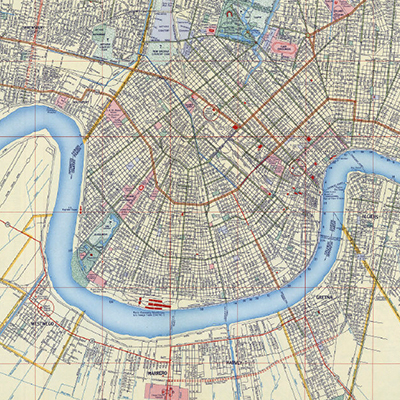Bringing Interdisciplinary Learning to Life

The Global Urban Humanities Initiative is a campus program exploring interdisciplinary urban experience. It combines disciplines from architecture to theatre to environmental planning, linking UC Berkeley’s College of Environmental Design with the College of Letters and Science.
As an example of the program’s interdisciplinary reach, last spring program director Susan Moffat taught an undergraduate course on the local area known as the Albany Bulb, sparking important conversations about place, space, and performance that are central to understanding the Global Urban Humanities initiative itself.
Moffat first became involved in Global Urban Humanities after a grant was secured from the Andrew W. Mellon Foundation in 2013. Previously, Moffat had worked in journalism, city planning, and environmental planning, but her undergraduate degree is in history and literature. As the program director, Moffat uses her past experiences to coordinate events, classes, and publications, connecting the dots between people and ideas. Part of this work entails bringing faculty together from different disciplines to teach innovative new courses. For example, English Professor Bryan Wagner and Landscape Architecture Professor Anna Brand will be co-teaching a class in the Spring of 2019 entitled “New Orleans: Historical Memory and Urban Design.” Moffat herself also teaches some of these courses.“[Teaching] really has helped me understand the challenges of interdisciplinary research,” she notes.
In the spring of 2018, Moffat team-taught a Landscape, Architecture, and Theater course with Professor Ghigo di Tommaso from Landscape, Architecture, and Environmental Planning and Professor Erika Chong Shuch from Theater, Dance, and Performance Studies. The class focused on the Albany Bulb, a former landfill that has been transformed into a communal and artistic outdoor space. The faculty chose the site because they wanted to provide students with a new understanding of spaces that are maintained voluntarily and used differently by varied groups. The course consisted of multiple parts ranging from acting workshops in an acting studio, to map-making in a design studio, to exploring the Bulb itself. The class culminated in an artistic performance at the site, revealing the intersections of sensation, emotion, and space that the students had been investigating throughout the semester.
While this site-specific approach to an undergraduate course is unconventional, it is an important way that the Global Urban Humanities Initiative brings interdisciplinary learning to life. In addition to learning about human experience in cities, Moffat emphasizes how important it is for those involved in the initiative to go outside of their comfort zones. In a course such as the one on the Albany Bulb, bringing different students together for a hands-on experience at a specific site allows them to think in ways they might not have before. Moffat wants her architecture students to slow down and look critically at the social, political, and cultural implications of their work, while she wants her humanities students to practice implementing their ideas in actual physical spaces. “We are trying to bring together observing and acting,” she says.
However, the Global Urban Humanities Initiative does not just consist of classes. Moffat and other faculty work together to create exhibitions, publications, and symposia that also engage the community at the intersection of humanities and urban design. On October 8th of this year, the initiative held a symposium entitled “Border Crossings: Interdisciplinary Experiments in the Global Urban Humanities.” This event was aimed at current faculty and student participants, who were able to share their research on urban life and how to study it from an interdisciplinary perspective. The initiative also offers undergraduate and graduate certificate programs, and it runs a fellowship program for grad students and faculty.
Through symposia, publications, exhibitions, and courses, Global Urban Humanities is taking an approach to urban space that unique in its specific combination of design and humanities disciplines. Understanding the art, literature, and the demographics of a place is imperative to understanding its social and architectural structure. In the words of Moffat, “the campus is a metropolis… filled with interesting people.” In taking a broader approach to the study of urban life, the initiative encourages students and faculty to think differently, work collaboratively, and learn from one another’s disciplines.